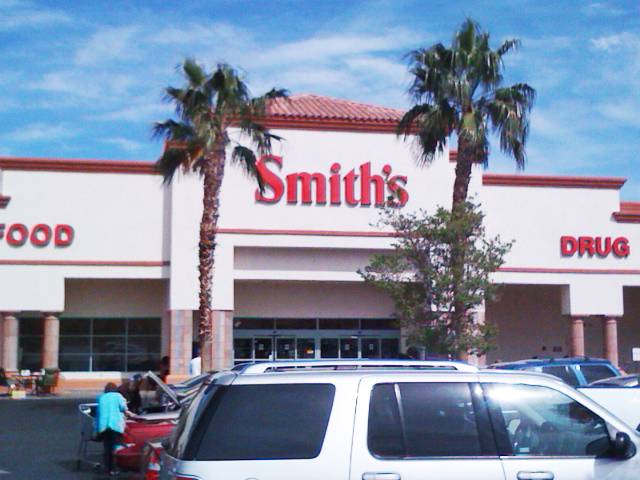Sunday, May 26, 2013 | 2 a.m.
Thirteen percent of Nevadans beware: In the fiscal year that begins Oct. 1, your monthly food stamp allowance is set to shrink. And depending on what happens in Congress, food stamps for some Nevadans might disappear.
Before disbanding for a regularly scheduled weeklong recess in honor of Memorial Day, Congress spent much of May working on the Farm Bill. As its title suggests, the legislation regulates matters of interest to farmers, such as crop insurance, rural development and market access.
But it is also the vehicle for setting food stamp policy, and Republicans and Democrats have marked differences over how the program should be run — and where it should be cut.
Members of both parties have identified areas to trim the Supplemental Nutrition Assistance Program, or SNAP. Under the Democrats' plan in the Senate, cuts would amount to about $4 billion over 10 years; under the Republicans’ plan in the House, they would amount to about $21 billion over the same period.
That may not seem like an enormous chop for a program that ran a fiscal year 2012 bill of almost $78.5 billion, according to USDA figures, but considering that the average American family on food stamps receives just $3,342 per year in benefits, the reach of such cuts is significant.
“It would undercut what we are trying to do in employment and training, which is so critical … to make sure supplemental nutrition assistance goes to families who have been working hard all their lives,” Senate Agriculture Committee Chairwoman Debbie Stabenow, D-Mich., said last week of the Republicans’ more expansive measures to cut the program.
“I know people have different views, but I would say that this is certainly minimal,” Sen. Pat Roberts, R-Kan., said of the Democrats' more modest proposal. “We can restore integrity to the program while providing benefits to those truly in need and save. … Note that I say ‘while providing benefits to those truly in need.’”
Democrats and Republicans are approaching food stamp cuts categorically: Each party is trying to identify areas of eligibility that can be dialed back to realize savings while affecting the smallest number of families.
For instance, most Democrats and Republicans want to close a loophole that automatically approves food stamps for certain renters who receive a nominal amount of aid from the federal government’s low-income heating and cooling subsidy, even though they do not pay a heating bill. The grants are ostensibly to offset rents that are higher because the landlord takes anticipated bill charges into consideration. In practice, they are often abused for food stamp eligibility.
That program would not affect many Nevadans, where federal heating and cooling subsidies are a small fraction of what they are, for example, in New England.
But a second area for cuts in the Republican House version of the farm bill could affect several hundred Nevada families who receive food stamps.
Republicans want to cut the “categorical eligibility” qualification, which has allowed families who have modest assets — such as a car in rural areas – or earnings that put them above the SNAP limit of 130 percent of the poverty line to qualify for food stamps since 1996. Normally, SNAP disqualifies anyone with more than $2,000 in savings or other assets from receiving food assistance. The rationale of the categorical eligibility waiver is that the families who qualify still have disposable income.
The Center on Budget and Policy Priorities, a Washington think tank, estimates that eliminating categorical eligibility would put 2 million SNAP recipients’ benefits in jeopardy, or about 4 percent of the total number of Americans participating in the program.
While USDA has not broken down how the proposed cuts would affect SNAP recipients state-by-state, it is a potentially serious concern for Nevada, which over the past few years experienced the second-fastest food stamp growth in the nation, reflecting the effect of the recession.
Nevada is one of 40 states and three U.S. territories that allow participation in the categorical-eligibility waiver. Nevada has some of the most generous gross income ceilings as well: Families with children may record income up to 200 percent of the poverty line and still qualify for food stamps. (Families and individuals without children, however, remain limited to the SNAP standard of 130 percent of the poverty line.)
So it would be families predominantly affected by the cut — and the cut could affect other benefits as well. SNAP eligibility can also determine eligibility for reduced-price school lunch programs.
The status of any proposed cuts is in limbo in Washington, where the Senate and House have yet to finish working on their respective farm bills and may push them off indefinitely to take up immigration legislation in June.
But even without any proactive changes to the program, the U.S. Department of Agriculture estimates that average food stamp benefits will drop by $25 per month when supplementary benefits that Congress approved in the 2009 stimulus bill expire Nov. 1.
That too, is a potentially serious concern to Nevadans. Though the cost of living in Nevada’s urban centers is high and dependency on food stamps is growing faster than the national average, Nevada’s monthly per-person and per-household food stamp benefits still remain below the national average: $123.35 compared with $133.41 per individual, and $258.81 compared with $278.48 per family.



Join the Discussion:
Check this out for a full explanation of our conversion to the LiveFyre commenting system and instructions on how to sign up for an account.
Full comments policy